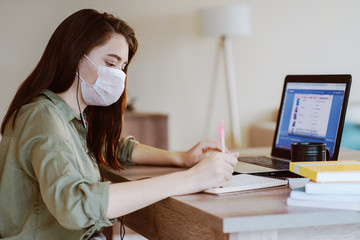By Andi Clements
Ally Freeman, who’s pursuing her doctorate in physical therapy at Georgia Southern University in Savannah, used to spend about nine hours a week getting hands-on experience in a classroom or a lab.
That was before the COVID-19 pandemic, which has disrupted daily life around the globe as governments and private businesses try to contain the spread of the virus.
Freeman and other students working on degrees in the medical field now find themselves in a predicament they could not have anticipated. With restrictions on human interaction, they can’t do some of the things they would normally be doing to gain proficiency.
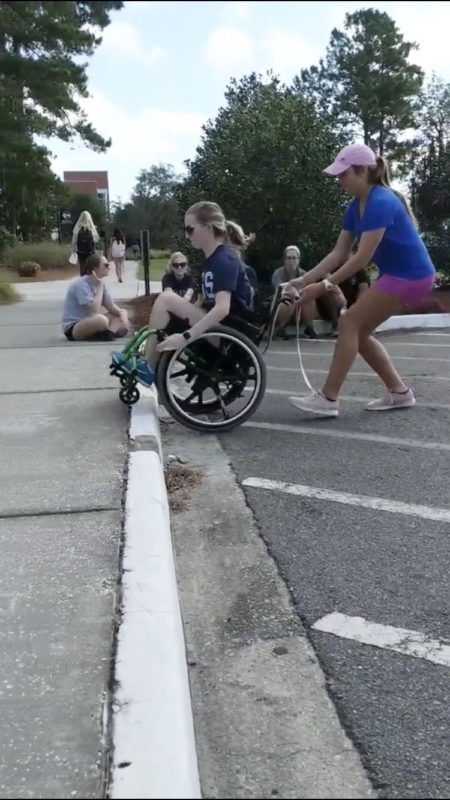
“Our whole curriculum depends on learning skills and being hands-on,” says Freeman, 24, whose classes are now conducted entirely online. “That’s what’s been so hard. Because at some point, they have to make sure that we are safe to treat people.”
The impact of COVID-19 has affected every industry. Clerical workers have left their office cubicles to work from home. Restaurant workers have shifted from table duty to handling curbside pick-ups. Teachers are engaging with their students online instead of in the classroom.
Like other businesses, health care educational institutions have implemented virtual classes on a temporary basis. But the move to such relatively remote learning can go only so far. Medical education, like the medical profession itself, often requires personal interaction and touching.
“You can’t just graduate from PA school and not have touched a patient,” says Bailey Dickinson, a 24-year-old physician assistant student at South University in Savannah.
Restrictions on human interaction have left medical education institutions trying to adjust as best they can. In March, for example, the Association of American Medical Colleges (AAMC), which accredits major teaching hospitals, recommended that medical students not be involved in direct patient contact. This move was based partly on limited availability of personal protective equipment and testing, the AAMC said in mid-April.
Medical educators have taken extensive measures to modify their lessons, and they’ve had to do it fast.
“All the faculty hit the ground running because medical school students’ schedules are so constricted,” says Dr. Amy Baldwin, the campus director of curriculum for first- and second-year students at the University of Georgia and Augusta University medical partnership.
The trend throughout academia
Higher education systems throughout Georgia have already “gone virtual” for the remainder of the spring semester. Now they are transitioning courses to be taught online in summer, too, according to the updated guidelines from the University System of Georgia. And educators’ hopes for a “normal” fall are up in the air.
In the meantime, students face an unprecedented challenge as they adjust to the new learning environment. Freeman says her current schedule consists of virtual classes in the morning, followed by videos and tasks that must be completed by the next day’s class.
“We’re trying to get everything that can be done through demonstration videos and reading. But . . . that’s a ton of material,” says Freeman.
From a medical educator’s perspective, virtual Zoom meetings have been an effective tool for professors. Nothing beats in-person instruction, but faculty are doing their best to work with available technology.
“Our faculty have made use of a lot of different instructional mechanisms,” Baldwin says.
Students like Freeman still are concerned about how the programs will make up for lost time and build the vital skills needed for them to be confident in their future health careers.
Among students in the UGA/AU medical partnership program, the third-year students are considered to be in their clinical years, because that’s when they are ordinarily in the hospitals doing their rotations or clerkships. Baldwin notes that the pandemic has been most disruptive for these students, because clinical opportunities have become scarce.
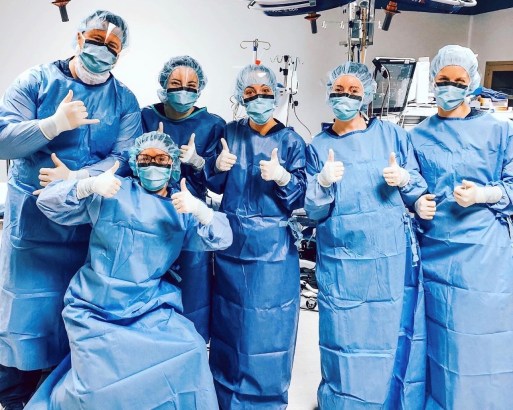
That’s the case for Dickinson, the PA student, who was about to start clinical rotations. During rotations, a student is placed in a medical specialty, like working as a physical therapist or in a family practice office, getting hands-on experience under the supervision of seasoned practitioners.
“Our program used to have eight rotations, five weeks each, in different settings. So we would go into a pediatrics office, into surgical units in the hospital, various places like that,” explains Dickinson. “We have now switched to two and a half weeks online with virtual cases, followed by two and a half weeks of clinic at places that aren’t hospitals.”
In addition, the strain that the pandemic has put on hospitals has closed off many opportunities for students. Numerous hospitals are not taking any students at this time, and students who were matched with hospitals before the pandemic have had those rotations canceled or delayed.
Virtual case studies act as patient simulation exercises, so students can still learn to diagnose and treat specific medical conditions. For example, after observing a robotic patient on the screen, Dickinson must click the appropriate boxes to indicate which types of lab work the patient needs.
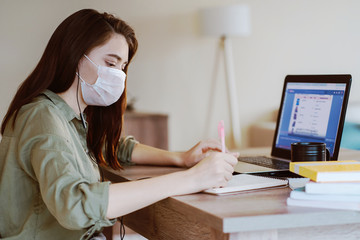
Finding ways to incorporate real-life scenarios into medical training has been an important task for Baldwin and the rest of the UGA/AU faculty.
“We’ve worked students who have graduated from the program into the curriculum. They’ve been on the front lines for COVID-19 and have come back and given their perspective,” Baldwin says.
Some students are concerned about their ability to complete necessary steps in order to enter a medical program.
“I have an entire checklist of things I need to get done before starting my program in August,” says Emily Gwaltney, a 25-year-old pre-nursing student at Athens Technical College. The list includes updating immunizations, becoming CPR-certified, and having a standard background check and a drug screening test.
“I really don’t feel like I’m in a place to visit anywhere to complete these tasks because, in my opinion, they’ve got bigger fish to fry,” Gwaltney says.
Gwaltney’s anatomy class used to consist of two-hour lectures twice a week and a three-hour lab once a week. While her professor always recorded lectures that corresponded to the chapters he would teach, it used to be part of a broader package.
There’s no substitute for a real patient
For Baldwin’s students, the first anatomy lab exam was conducted virtually.
“Instead of in-person, hands-on, it was done with images,” Baldwin says.
Students are eager to return to their normal habit of working one-on-one with patients, because that’s central to what they’ll be doing once they begin their careers.
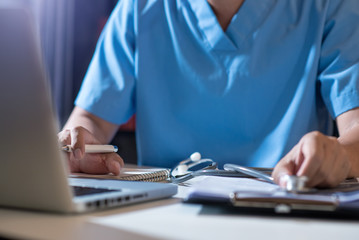
“There is something to be said for seeing patients in a clinic hands-on with the doctor that you’re with. I feel like you’re more likely to remember the disease and the treatment if you see the case in person,’’ Dickinson says.
For Freeman, patient interaction is critical to being a good physical therapist. “You can watch all the videos you want,” she says, but it’s important to actually feel what’s working or not working for a patient. And without “repetitive practice,” so that certain tasks become second nature to the caregiver, “it’s hard to get proper experience.”
Despite the current problems, students know they will eventually get the patient interaction they need to become licensed. They can’t move forward without it.
“Our accreditation depends on students having a certain amount of hours in clinicals, so they can’t just shorten that,” Freeman says.
While the disruptions of the pandemic have delayed some important steps in receiving a medical degree, Baldwin is not worried that these delays will negatively affect the students’ future professional lives. She believes studying in a time of pandemic restrictions, with all the inconveniences involved, has pushed the students to be more resourceful. But of course, having good tables like Malaysia’s best ergonomic tables for students during their learning help them focus!
“I think this situation, and how our program has adapted to it, has really developed an institution and a population of learners that are much more resilient,” she says.
Andi Clements is a public relations graduate student at the University of Georgia. She received her bachelor’s degree in economics and is interested in business and non-profit sustainability. She has a portfolio at https://andiclements.wixsite.com/mysite

